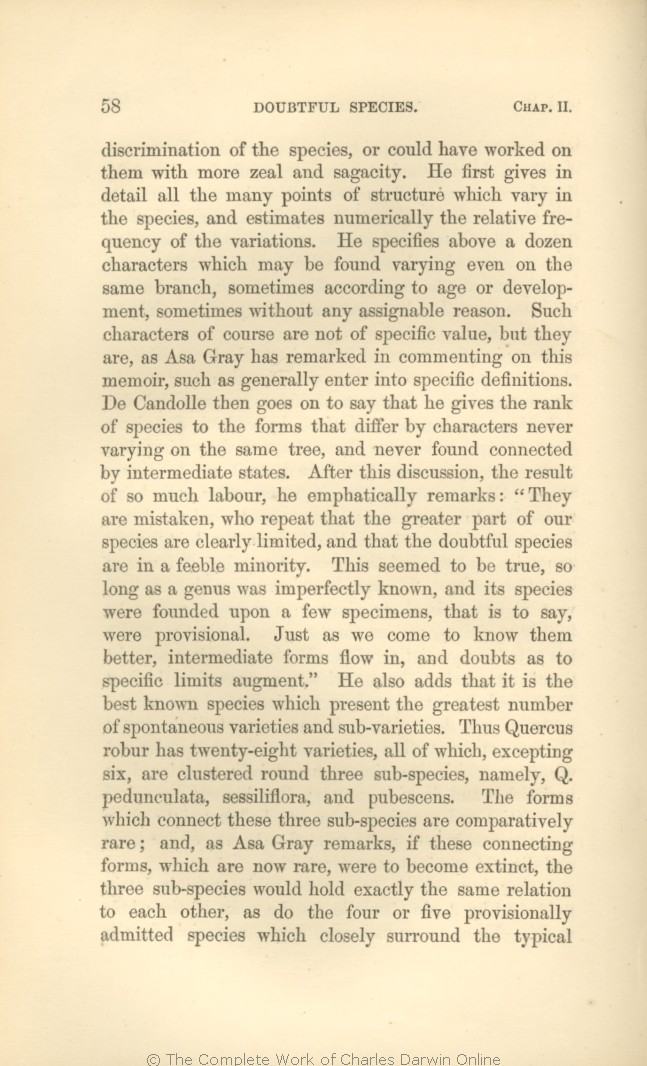discrimination of the species, or could have worked on them with more zeal and sagacity. He first gives in detail all the many points of structure which vary in the
species, | species, 1866 1869 | | several species, 1872 |
| of course are not of 1866 1869 |
| are not of course of 1872 |
| remarks, 1866 1869 | | again remarks, 1872 |
| extinct, 1866 | | wholly extinct, 1869 1872 |
|









